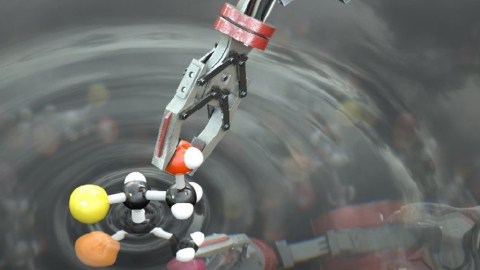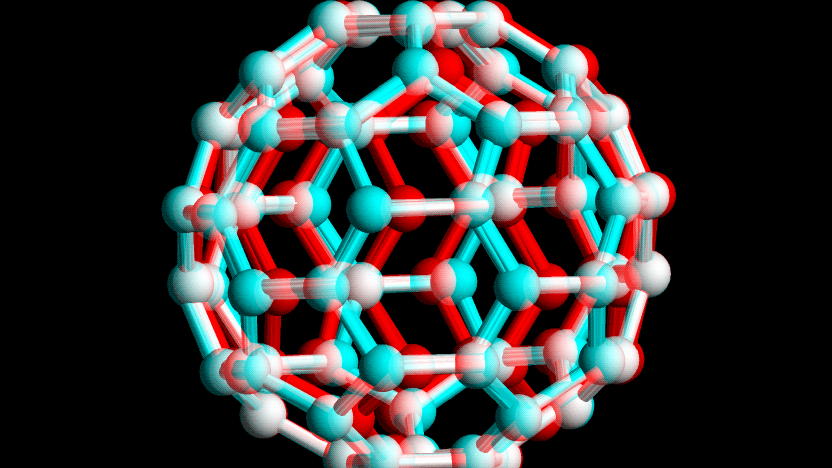The World’s 1st Molecular Robot Has Just Been Created by UK Scientists

We marvel at movies like Ant Man, Inner Space, and Fantastic Voyage, where someone or something can shrink down to the nanoscale and navigate a microscopic world. Although shrinking something down with some type of laser or energy field is all but impossible today, we are beginning to exact more and more control over tinier and tinier environments.
The new and growing branch of nanotechnology promises much. In the near future, experts predict that nanosensors will be used inside our bodies to monitor our health and alert us to disease or even an oncoming health crisis. Nanosensors could also monitor the environment. Another exciting application is creating the next generation of materials with novel properties.
These can include gaining electrical properties in fabric-based items. Consider clothing that can conduct electricity; your outfit could have electronics built into it, or even a wireless charger for your phone. Nanotech can also help create the next generation of bullet-proof and explosive-resistant materials. We will be able to imbue materials with other properties as well such as water-resistance, anti-corrosive properties, anti-fogging, anti-abrasion, and more.
Imagine self-healing materials. Tear your jacket? No problem. It just grows back. In the realm of energy, nanotech could be used to improve solar cells and develop ultra-capacitors for energy storage, which could help us embrace green energy and jettison fossil fuels. In total, scientists believe nanotech can help us to develop multi-component systems that are smart, autonomous, and adapt to the environment or changing circumstances.

Carbon nanotubes strung together can make some of the strongest material on Earth. Wikipedia Commons.
But what about actual machines? The field of nanorobotics is young but growing rapidly. One research team is working on self-aware nanobots that can deliver drugs inside the body, right where they’re needed. Another group at Rice University built a nanocar. A collaboration of several US universities recently announced the creation of a photodynamic nanodrill. When it encounters light or a laser, it spins and can drill right down into a cancer cell, killing it.
Now, a team at the University of Manchester in the UK has reached another milestone. It’s developed a robot so small it operates on the molecular level. This is the world’s first molecular robot, and it has an arm which can manipulate individual molecules or move them in clusters.
The thing is a millionth of a millimeter in size. To give you an idea of the scale we’re talking about, one quintillion (a billion billion) of them piled together would be about equal to a few grains of salt. Each machine is comprised of 150 atoms. That includes carbon, hydrogen, oxygen, and nitrogen atoms. Though small, these machines could offer us incredible capabilities, such as to work in tiny, molecular factories, in order to manufacture the next generation of materials and products.

This 2016 Nobel Prize-winning Nanocar was created at Rice University. Edumol, Molecular Visualizations. Wikimedia Commons.
Certain biological processes move atoms individually or in clusters all the time to serve an organism’s needs. Previous to this study, some experts argued that doing so artificially was all but impossible. Professor David Leigh of University of Manchester’s School of Chemistry led the study. He called this, “the ultimate in the miniaturization of machinery.” The chemist explained how he and his team approached the project.
Leigh said:
Our robot is literally a molecular robot constructed of atoms just like you can build a very simple robot out of Lego bricks. The robot then responds to a series of simple commands that are programmed with chemical inputs by a scientist. It is similar to the way robots are used on a car assembly line. Those robots pick up a panel and position it so that it can be riveted in the correct way to build the bodywork of a car. So, just like the robot in the factory, our molecular version can be programmed to position and rivet components in different ways to build different products, just on a much smaller scale, at a molecular level.

Detailed visualization of the molecular robot. Credit: Nature.
While most nanobots are extremely complex to build, this one operates on simple, well understood chemical processes. Prof. Leigh said, “This is the science of how atoms and molecules react with each other and how larger molecules are constructed from smaller ones.” He added, “It is the same sort of process scientists use to make medicines and plastics from simple chemical building blocks. Then, once the nano-robots have been constructed, they are operated by scientists by adding chemical inputs which tell the robots what to do and when, just like a computer program.”
The cost of materials, particularly to make electronics, is going through the roof. The beauty in using such robots instead of life-sized equipment is that everything operates on such a small scale, once the price of the actual tech comes down, it’ll make the ability to create materials more cost-effective. It could also improve the quality of products. It may even help increase the rate of miniaturization. We’ll be able to make smaller, more agile devices more easily. Such a robot could also help improve the process of discovering new drugs as well.
“Our aim is to design and make the smallest machines possible,” Prof. Leigh said. “This is just the start but we anticipate that within 10 to 20 years molecular robots will begin to be used to build molecules and materials on assembly lines in molecular factories.”
The results of this study were published in the journal Nature.
To get an interesting look at the “nanobots” that already operate inside your body, click here:
—





